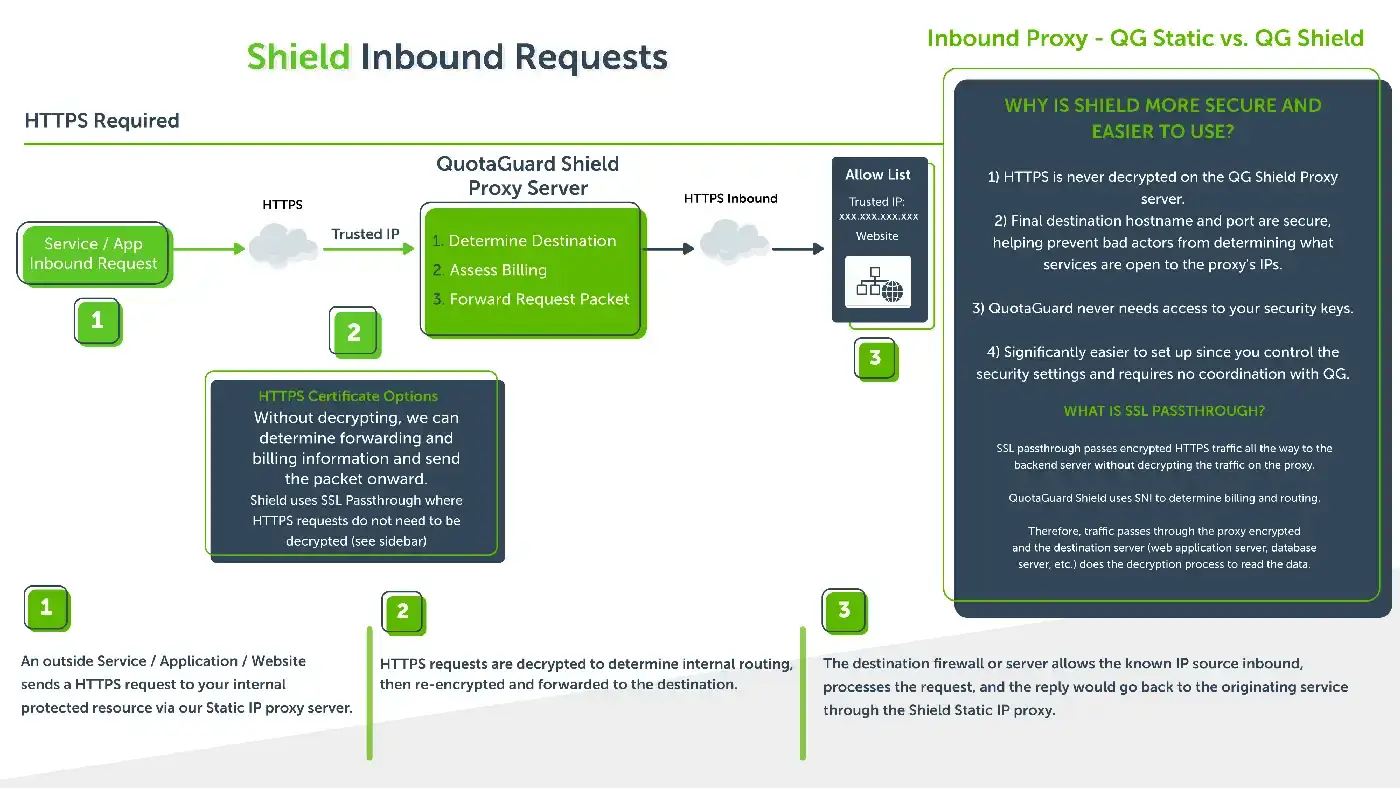Only XL Routes Shield does not expose sensitive data or require sharing private certificates with third parties, like other Static IP proxies, when using HTTPS or Secure SOCKS.
Exposing sensitive data and sharing private security keys is not HIPAA / PCI compliant and introduces multiple security vulnerabilities – even if you aren’t subject to any outside security requirements.
XL Routes Shield uses SSL Passthrough – instead of SSL Termination – to route all traffic securely.
